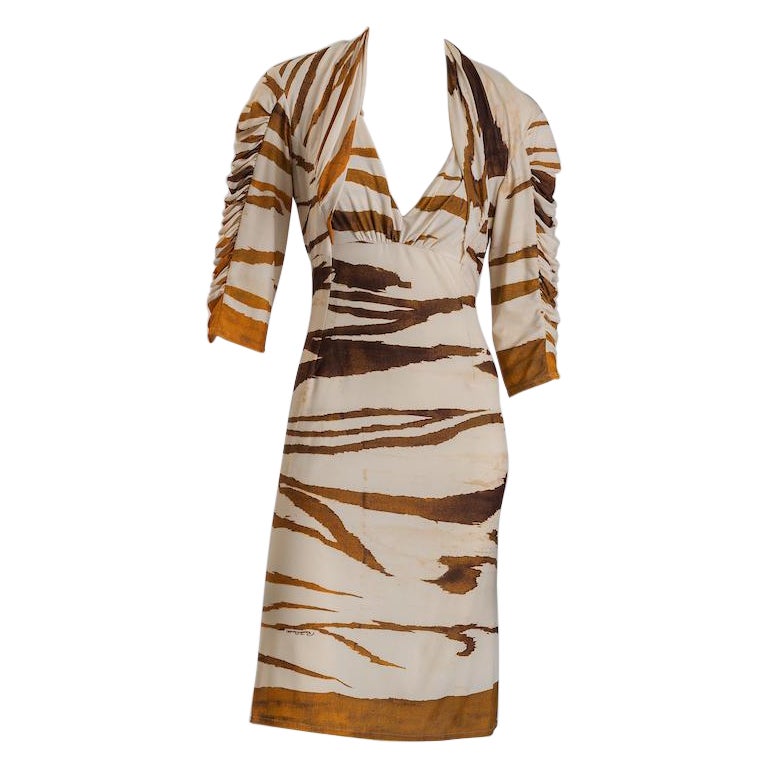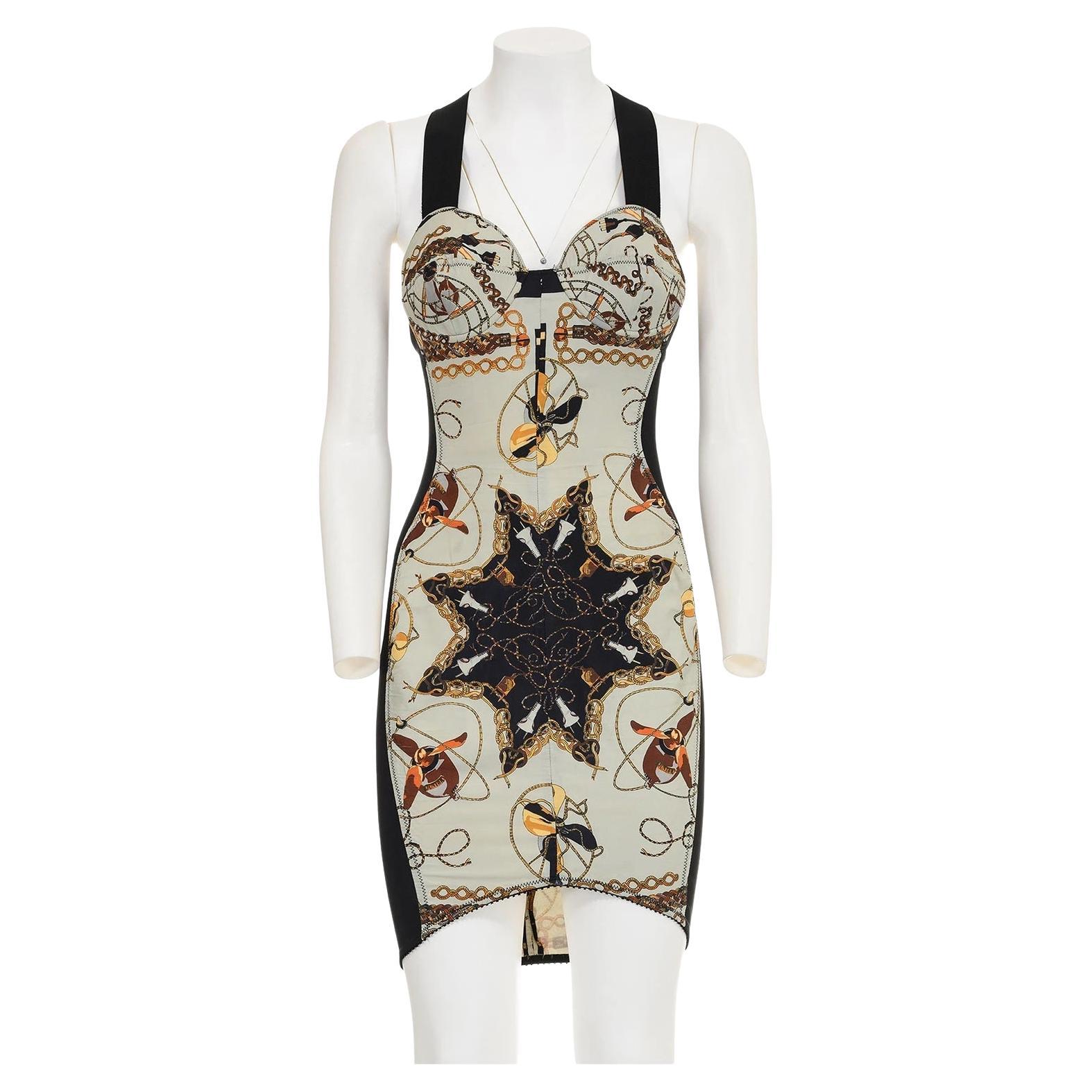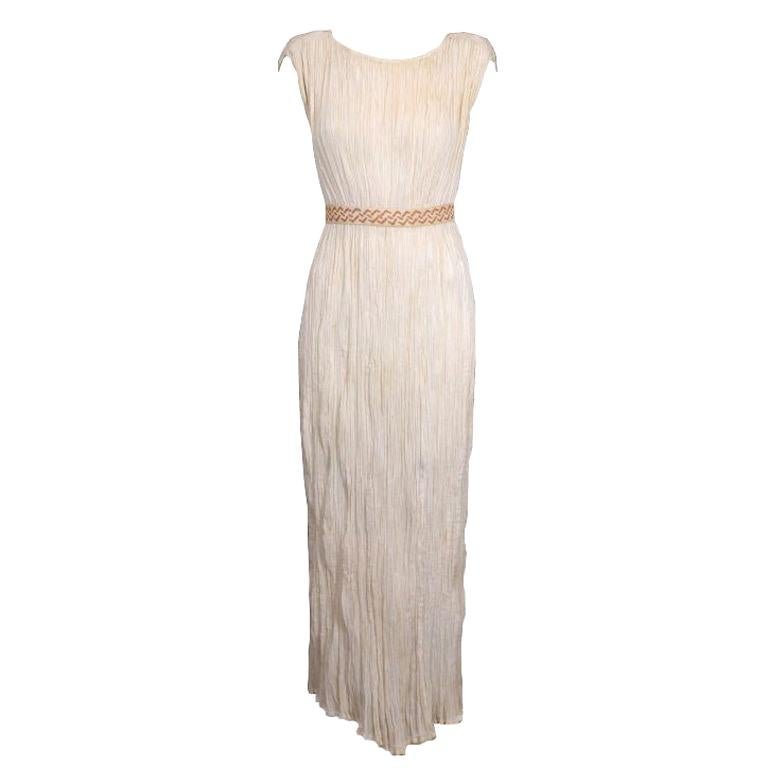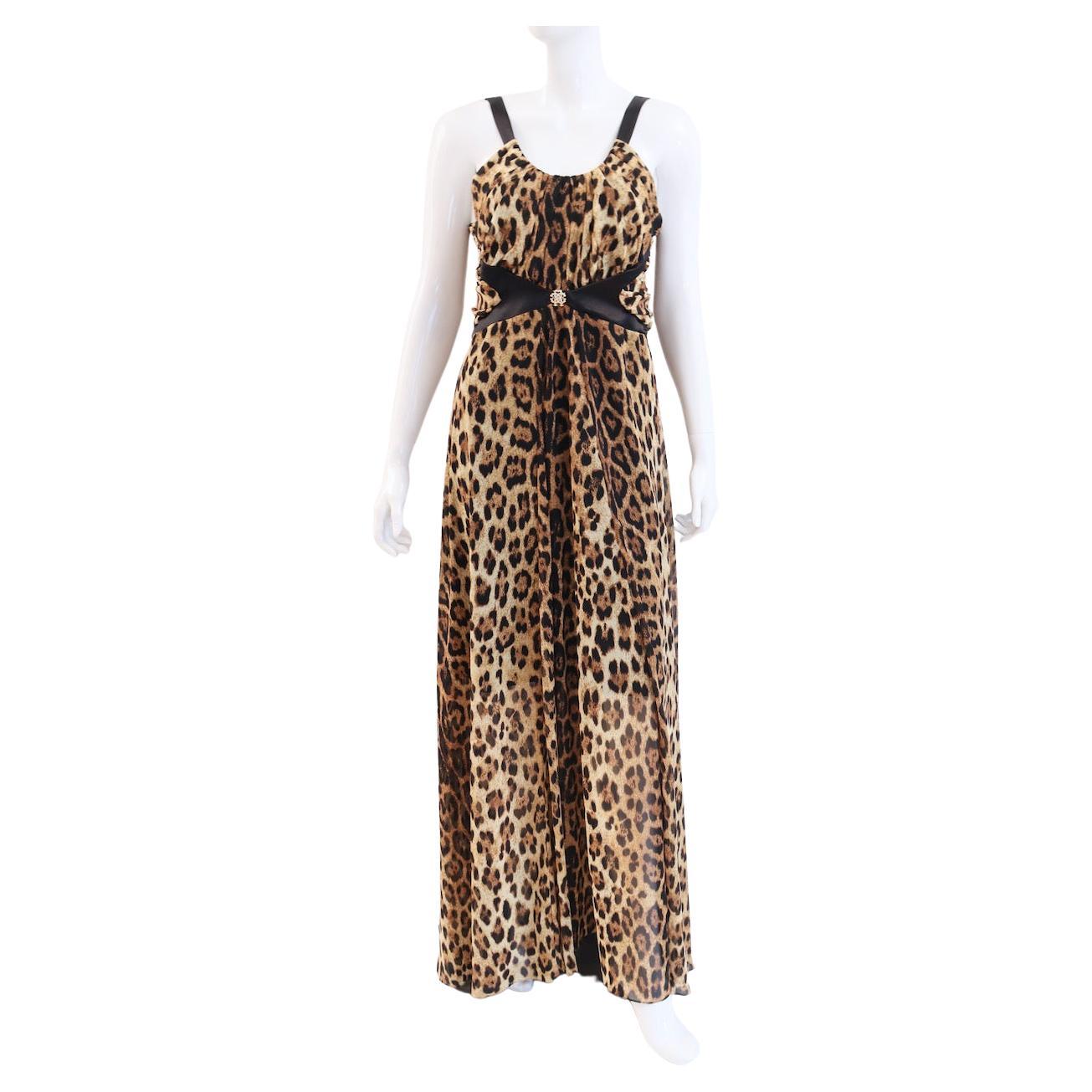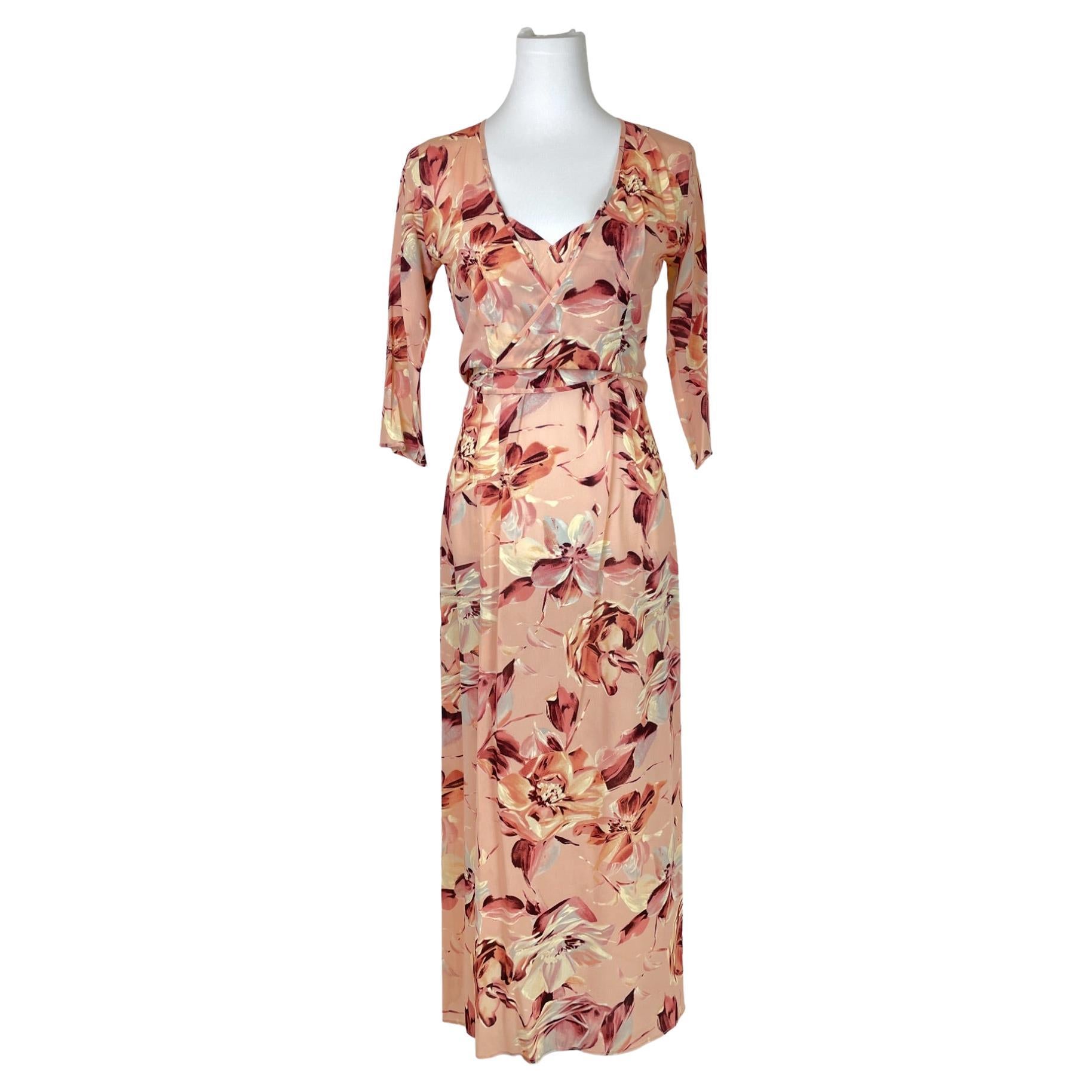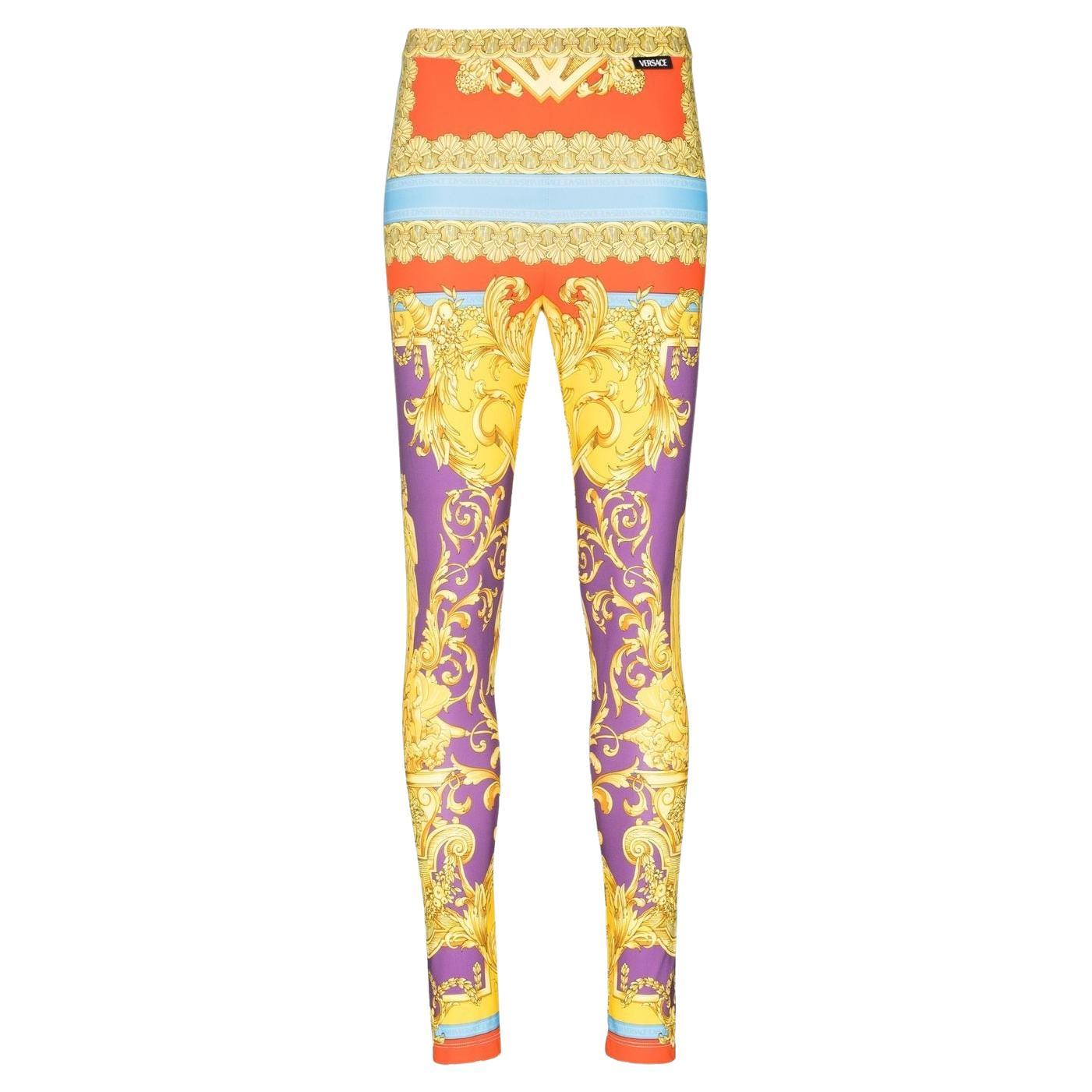Items Similar to MADAME GRES HAUTE COUTURE Betsy Bloomingdale 1960's Yellow Asymmetrical Gown
Want more images or videos?
Request additional images or videos from the seller
1 of 11
MADAME GRES HAUTE COUTURE Betsy Bloomingdale 1960's Yellow Asymmetrical Gown
About the Item
This gown is composed of a yellow silk crepe. Features an asymmetrical design with snap closures. In excellent vintage condition.
**Please cross-reference measurements for personal accuracy. Size in description box is an estimation.
Measures (Approximately)
Length: 60"
Bust: 36" - 38"
Waist: 38"
Hip: 38"
- Designer:
- Dimensions:Length: 62.5 in (158.75 cm)Marked Size: 2 (NA)Bust: 36 in (91.44 cm)Waist: 32 in (81.28 cm)Hip: 47 in (119.38 cm)
- Place of Origin:
- Period:
- Condition:Wear consistent with age and use.
- Seller Location:Los Angeles, CA
- Reference Number:1stDibs: LU481862343
About the Seller
5.0
Vetted Seller
These experienced sellers undergo a comprehensive evaluation by our team of in-house experts.
Established in 1995
1stDibs seller since 2009
573 sales on 1stDibs
Typical response time: 1 to 2 days
- ShippingRetrieving quote...Ships From: Los Angeles, CA
- Return PolicyThis item cannot be returned.
More From This SellerView All
- Ceil Chapman Light Pink Lace Cocktail Dress, Circa 1950By Ceil ChapmanLocated in Los Angeles, CAThis is a collectible pink lace vintage cocktail dress by Ceil Chapman, from the 1950's. The dress has a scoop neckline, full skirt, cap sleeve, and a zipper up the back. Due to ...Category
1950s American Cocktail Dresses
- Elizabeth Mason Couture Silk Rose Wrap Made to OrderBy Elizabeth Mason CoutureLocated in Los Angeles, CAThis Elizabeth Mason Couture "Rose Wrap" is fashioned from the finest silk, this wrap is created at Elizabeth Mason's Beverly Hills Atelier. We offer exclusive custom made couture go...Category
20th Century American Evening Gowns
- Elizabeth Mason Couture Silk Ruffle Bolero Made to OrderBy Elizabeth Mason CoutureLocated in Los Angeles, CAThis Elizabeth Mason Couture "Ruffled Bolero" is fashioned from the finest silk, this bolero is created at Elizabeth Mason's Beverly Hills Atelier. We offer exclusive custom made cou...Category
21st Century and Contemporary American Evening Gowns
- 1960's Heavily Beaded Off White Cream GownLocated in Los Angeles, CAThis is a stunning Ivory colored gown from the 1960's. The dress is fashioned with heavily beaded pearl like accents and adornments. There is a center back zipper for ease of access....Category
1960s Unknown Evening Gowns
- Elizabeth Mason Couture Draped Jersey Gown w. Rhinestone strap made to orderBy Elizabeth Mason CoutureLocated in Los Angeles, CAThis is a sophisticated cocktail dress from Elizabeth Mason Couture made of a nude silk jersey knit that is ruched down the front and has a rhinestone center piece that becomes the s...Category
21st Century and Contemporary American Evening Gowns
- Badgley Mischka Cream Beaded Strapless wedding Gown w/ TrainBy Badgley MischkaLocated in Los Angeles, CAThis is a stunning wedding gown from Badgley Mischka. The bodice is decorated with beading and rhinestones and the skirt has beading and sequins. There is a tulle underskirt for full...Category
21st Century and Contemporary American Contemporary Wedding Dresses
You May Also Like
- Roberto Cavalli Tiger Print Jersey Cocktail / Dinner Dress Size 46 EUBy Roberto CavalliLocated in New York, NYRoberto Cavalli tiger print ivory jersey cocktail dress with 3/4 length sleeves. This fun dress is form fitted, gathered at the bust with beautiful...Category
Early 2000s Italian Evening Dresses and Gowns
- Jean Paul Gaultier Junior Bird Tropical Feather Electrical Mandala Runway DressBy Jean Paul GaultierLocated in PARIS, FRJEAN PAUL GAULTIER Junior VINTAGE Bird Tropical Feather Mandala Electrical Print Bodycon Bustier Rare Collector Pencil Dress Black and cream electrical print bodycon dress from Je...Category
1990s French Mini Dress
- Extremely Rare Mariano Fortuny Cotton DelphosBy FortunyLocated in Riverdale, NYThis extraordinarily rare dress is made of finely pleated white cotton. Few cotton pleated Fortuny dresses have been documented and survived.
Named after a Greek clas...CategoryEarly 20th Century Italian Art Deco Delphos Gowns
- NWT ROBERTO CAVALLI Leopard Print GownBy Roberto CavalliLocated in Georgetown, MENew With Tags stunning ROBERTO CAVALLI Leopard Print Gown. Incredible. Designer: Roberto Cavalli Condition: New With Tags, Excellent Siz...Category
2010s Evening Dresses
- Rare Dolce e Gabbana Floreal Set S/S 1997By Dolce & GabbanaLocated in Venezia, ITRare Dolce e Gabbana Floreal Set Dress + top S/S 1997 - NO RETURNSCategory
1990s Italian Summer Dresses
- Versace Heritage Legging in Dark Orchid & Sun Baroque Print SZ 38By VersaceLocated in PUTNEY, NSWVersace Medusa Renaissance print leggings A colourful take on Versace's signature Greek-inspired motif, the Medusa Renaissance is present throughout the house's SS22 collection, as s...Category
2010s Italian Evening Dresses
Recently Viewed
View AllMore Ways To Browse
Vintage Gown Size S
Asymmetric Gown
Yellow Gown
Asymmetrical Gowns
Asymmetrical Evening Gowns
Asymmetric Evening Gown
Vintage Evening Gown 1960
Silk Gown 1960s
Gown Yellow Dress
Vintage 1960s Gown
Yellow Evening Gown
1960s Couture
French 1960s Dress
Couture Evening Dress 1960
1960 Haute
Yellow Silk Gown
1960s Couture Gown
Vintage Gown Yellow
